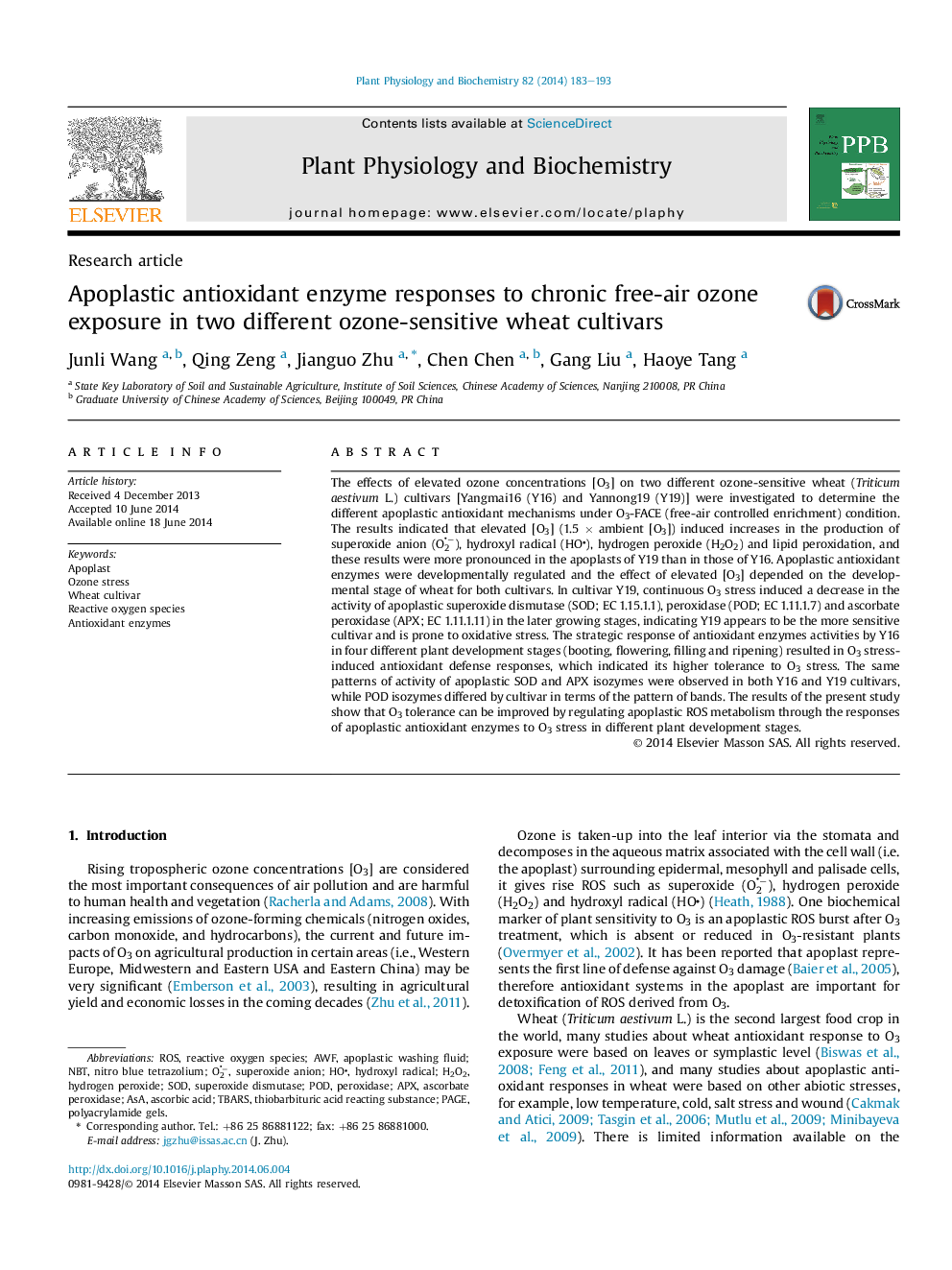| Article ID | Journal | Published Year | Pages | File Type |
|---|---|---|---|---|
| 2016100 | Plant Physiology and Biochemistry | 2014 | 11 Pages |
•We applied O3-FACE to investigate apoplastic antioxidant enzymes in wheat.•We chose two wheat cultivars, which had different O3 sensitivity.•Apoplastic O2− and H2O2 production under O3 was more pronounced in Y19 than Y16.•Continuous O3 stress decreased the apoplastic antioxidant enzyme activities in Y19.•The apoplast mechanisms explain the different wheat sensitivity to O3.
The effects of elevated ozone concentrations [O3] on two different ozone-sensitive wheat (Triticum aestivum L.) cultivars [Yangmai16 (Y16) and Yannong19 (Y19)] were investigated to determine the different apoplastic antioxidant mechanisms under O3-FACE (free-air controlled enrichment) condition. The results indicated that elevated [O3] (1.5 × ambient [O3]) induced increases in the production of superoxide anion (O2−), hydroxyl radical (HO), hydrogen peroxide (H2O2) and lipid peroxidation, and these results were more pronounced in the apoplasts of Y19 than in those of Y16. Apoplastic antioxidant enzymes were developmentally regulated and the effect of elevated [O3] depended on the developmental stage of wheat for both cultivars. In cultivar Y19, continuous O3 stress induced a decrease in the activity of apoplastic superoxide dismutase (SOD; EC 1.15.1.1), peroxidase (POD; EC 1.11.1.7) and ascorbate peroxidase (APX; EC 1.11.1.11) in the later growing stages, indicating Y19 appears to be the more sensitive cultivar and is prone to oxidative stress. The strategic response of antioxidant enzymes activities by Y16 in four different plant development stages (booting, flowering, filling and ripening) resulted in O3 stress-induced antioxidant defense responses, which indicated its higher tolerance to O3 stress. The same patterns of activity of apoplastic SOD and APX isozymes were observed in both Y16 and Y19 cultivars, while POD isozymes differed by cultivar in terms of the pattern of bands. The results of the present study show that O3 tolerance can be improved by regulating apoplastic ROS metabolism through the responses of apoplastic antioxidant enzymes to O3 stress in different plant development stages.
